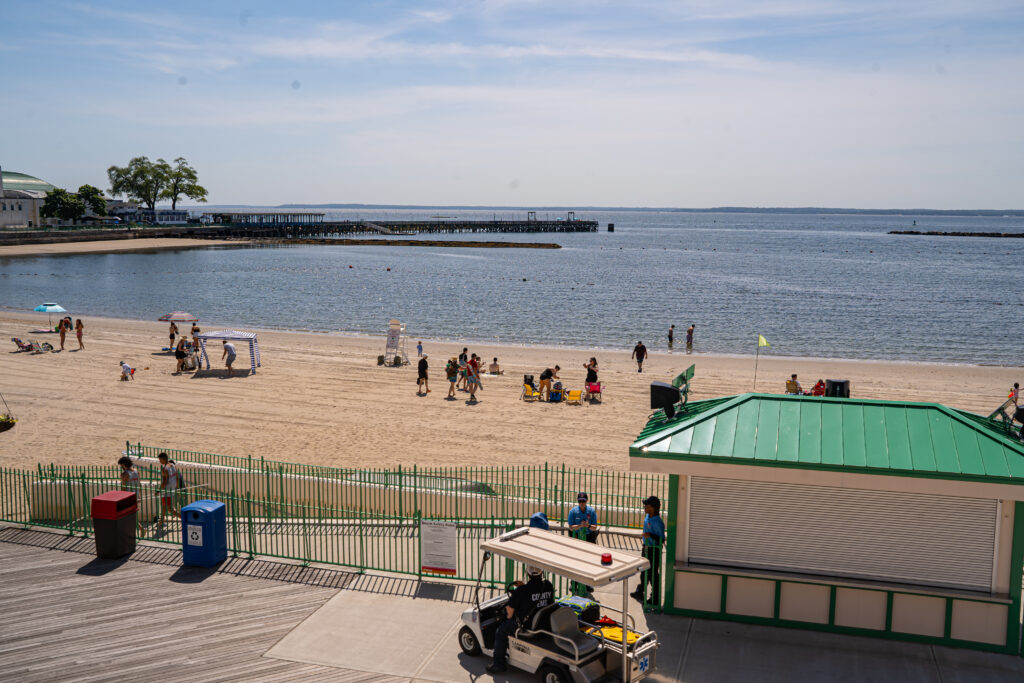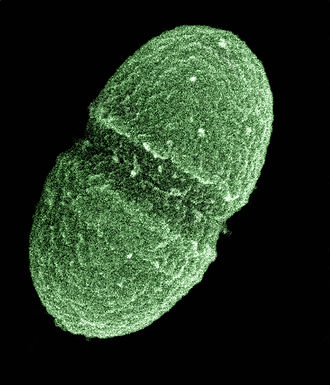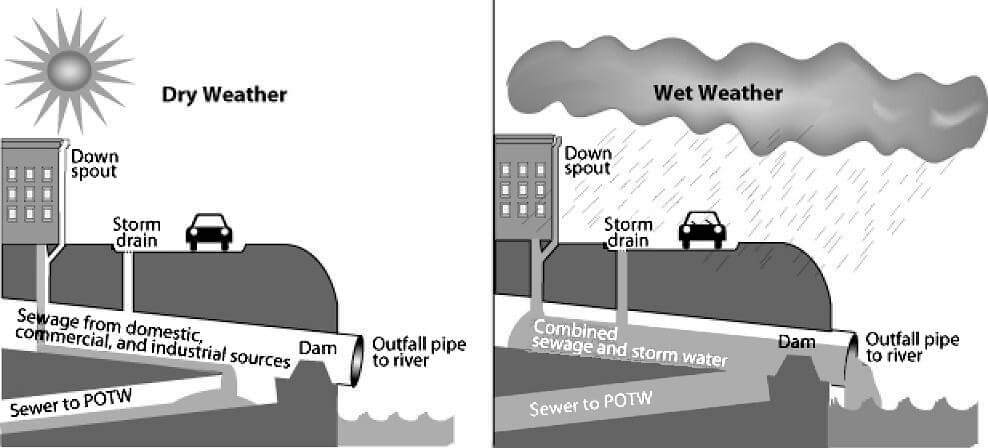
Caroline Wade is a junior at the Academy at Rye High School. The Academy is a program that focuses on project-based learning. Wade recently completed this research paper about the Long Island Sound, conducting interviews and gathering research on the health problems the Sound can cause to Rye bathers.
By Caroline Wade

In the town of Rye, approximately 16,000 residents spend their summers swimming in the Long Island Sound (Rye, NY Census Place). What those swimmers may not realize is that the Sound is full of pollution and harmful substances that are invisible to the naked eye. Upon entering the Sound, bathers risk exposure to contaminants that can cause a wide variety of health issues. The sewage water overflowing into the Sound poses a major risk to the citizens of Rye.
Save the Sound, an organization based in Larchmont, New York, and New Haven, Connecticut, tested the levels of fecal bacteria in the water at Rye Playland Beach throughout 2023. They were looking for signs of enterococcus, a fecal bacteria containing lactic acid and many harmful pathogens (“Enterococcus Infections – StatPearls”). It’s normal for a body of water to contain a certain amount of this bacteria, but the healthy level of enterococcus is only around 35 cfu (colony-forming unit).
According to records from Sound Health Explorer, those levels tend to vary wildly in the Rye Beach area. On August 30, 2023, for example, the enterococcus level was approximately 700 cfu – 20 times higher than is safe for human beings to swim in (“Rye Playland Beach”). While the Sound does not always contain such high levels of contamination, over 2023 the water failed safety tests 50% of the time. On average, Rye Playland Beach had an enterococcus level of 81 cfu.
In 2023, Save The Sound tested the Rye Beach Water once a month. Of the 12 samples taken, 6 passed (meaning they had a bacteria level of less than 104 cfu) and 6 failed (“2023 Bacteria Monitoring Data”). Swimming in such a high concentration of enterococcus puts you at risk for infection. These dangerous bacteria can cause strep throat, pinkeye, meningitis and UTIs (“Enterococcus faecalis Tropism for the Kidneys in the Urinary Tract of C57BL/6J Mice”). Based on all the information gathered by Save The Sound and Sound Health Explorer, the risks of swimming in this body of water seem far higher than the average beachgoer might expect.

How did the Sound become so polluted? Research conducted by Save The Sound determined that 27 billion gallons of water from sewers were washed into the Sound during rainy weather on a yearly basis. This pollution entering the water can also be known as Combined Sewage Overflows (CSO) (“How New York City’s Sewage Gets Into Long Island Sound”).
According to David Ansel, Vice President of Water Protection at Save The Sound, sewage treatment facilities are not able to handle the volume of sewage and stormwater they receive. Ansel said, “Literally billions of gallons of untreated sewage go into New York City waters every year, including the Long Island Sound. Those are the big challenges we are facing” (D. Ansel, personal conversation, May 16, 2024).
Save The Sound’s Director of Water Quality, Peter Linderoth, explained that the area surrounding the Long Island Sound is an urbanized estuary. A typical estuary is a coastal water body in which the freshwater in rivers and streams mix with the salt water contained in the ocean. These estuaries provide benefits and services that sea animals depend on for survival. In addition, however, they are meant to act as buffers for overflowing flood water. As coastal areas grow and become increasingly urbanized, the rivers and streams that run through those urbanized areas face increasing amounts of pollutants.
Sewage water, fertilizers, pet waste, wastewater discharge, and more are carried into the Long Island Sound (“Basic Information about Estuaries”). The aging sewage infrastructure in Rye is not strong enough to handle the pollution created by Rye’s citizens. Linderoth believes that one major cause of water pollution is “untreated sewage making its way to the waters and it can make us sick” (P. Linderoth, personal conversation, May 17, 2024). Sewage overflow is not to be overlooked, as it can lead to many health issues that can become highly serious. The diagram below illustrates how when there is little rain, the local pipes are able to move wastewater to Publicly Owned Treatment Works (POTW). When excessive rain occurs, however, the sewers begin to overflow into the Long Island Sound.

Rainfall has been increasing in New York State consistently over the last hundred years, and that trend is expected to continue. According to the New York State Climate Impact Assessment, “total precipitation is projected to keep increasing by about 6% to 17% by the end of the century” (“Precipitation – New York State Climate Impacts Assessment”). The problem of sewage runoff will only be worsened by these weather changes, unless Rye and the surrounding areas make major upgrades to their water treatment infrastructure.
Enterococcus isn’t the only dangerous element that’s being brought in by this sewage overflow. When polluted water enters the sound, it brings in loads of nitrogen that pose threats to the ecosystem. Nitrogen, a plant nutrient, “can stimulate excessive growth of plant plankton and macroalgae in a process called eutrophication. When plankton or microorganisms that eat the plankton decay, oxygen is consumed by bacteria and the bottom waters can become “hypoxic,” with less than 3.0 mg/l of oxygen” (“Nitrogen Loading”). These areas, known as “dead zones,” have little to no oxygen, so the fish that live there are unable to breathe. This leads them to die at a rapid rate (“Dead Zones”). Dead zones disrupt the food chain of other local wildlife. Because the Sound “is the second largest estuary on the East Coast and one of North America’s most biologically diverse,” it is vital to protect the species that make their homes there, in addition to its human inhabitants (“Long Island Sound Futures Fund”).
Sewage water in The Long Island Sound is an issue that needs to be addressed immediately. Due to the amount of health problems this sewage runoff can cause, there is a dire need to take a stand on this potentially life changing issue. Swimming in enterococcus and COS is dangerous for both humans and animals in the water. Rye has many local beaches surrounding the Long Island Sound that kids and adults swim in all summer long. If action is not taken, the problem will continue to get worse and make people sick.
Save The Sound is taking action to fight against this dangerous climate issue. Their Ecological Restoration Program has already “helped to restore and protect more than 135 acres of marsh using barrier removal, marsh plantings, and green infrastructure.” Save the Sound has formed a Clean Water Investment coalition, which has since invested 3 billion dollars to protect waterways and fight pollution. They have worked with allies and legislators from Connecticut to create the Stewardship and Resiliency Program. This program “will develop and implement resiliency projects to assist municipalities in mitigating flooding, protecting water quality, and minimizing damage to critical infrastructure.” They have also created the Blue Plan, which has helped the New York and Connecticut governments work together to pass policies and legislation that protect the Sound (“Legislative Victories”). Rye can learn from Save The Sound in order to make the Long Island Sound cleaner and safer. To make sure our town beaches are safe, we must start making changes and looking out for The Long Island Sound.
Ways you can help:
Although large structural changes will be most effective in reducing sewage overflow, there are actions that Rye citizens can take on a community level to help protect our water. Here are some things you can do:
- Write to your local politicians, encouraging them to invest in updating our wastewater infrastructure.
- Get involved in research and discussions–whether that’s by attending film screenings, reading articles, or getting to know people who work for environmental non-profits.
- Talk with your local school about what students can do to reduce the amount of stormwater that comes off the ground.
- Participate in beach cleanups and ecological restoration projects.
- Become a member of Save The Sound and volunteer or explore other organizations like Long Island Sound Futures Fund or the Marshlands Conservancy.
###
Works Cited
Ansel, David. Personal interview. 16 May 2024.
“Basic Information about Estuaries.” United States Environmental Protection Agency, National Estuary Program, https://www.epa.gov/nep/basic-information-about-estuaries. Accessed 22 May 2024.
“Dead Zones.” Chesapeake Bay Foundation, https://www.cbf.org/issues/dead-zones/index.html. Accessed 16 May 2024.
“Enterococcus Faecalis.” Wikipedia, https://en.wikipedia.org/wiki/Enterococcus_faecalis. Accessed 11 May 2024.
“Enterococcus faecalis Tropism for the Kidneys in the Urinary Tract of C57BL/6J Mice.” National Library of Medicine, PubMed Central, https://www.ncbi.nlm.nih.gov/pmc/articles/PMC1087416/#:~:text=Enterococcus%20faecalis%2C%20while%20normally%20a,%2C%20bacteremia%2C%20and%20wound%20infections. Accessed 1 June 2024.
“Enterococcus Infections.” National Library of Medicine, StatPearls, 12 February 2024, https://www.ncbi.nlm.nih.gov/books/NBK567759/. Accessed 17 May 2024.
“How New York City’s Sewage Gets Into Long Island Sound.” Save the Sound, 9 May 2017, https://www.savethesound.org/2017/05/09/how-new-york-citys-sewage-gets-into-long-island-sound/. Accessed 14 May 2024.
“Legislative Victories.” Save the Sound, https://www.savethesound.org/about-us/major-victories/legislative-victories/. Accessed 31 May 2024.
Linderoth, Peter. Personal interview. 17 May 2024.
“Long Island Sound Futures Fund.” NFWF, 2022, https://longislandsoundstudy.net/ecosystem-target-indicators/nitrogen-loading/. Accessed 21 May 2024.
Marguerite, Christianne. “Bacteria from untreated sewage frequently causes beach closures across Long Island Sound.” LIS Water Quality, 26 June 2019, https://www.liswaterquality.org/bacteria-from-untreated-sewage-causes-beach-closures/. Accessed 8 May 2024.
“Nitrogen Loading.” Long Island Sound Study, https://longislandsoundstudy.net/ecosystem-target-indicators/nitrogen-loading/. Accessed 15 May 2024.
“Precipitation – New York State Climate Impacts Assessment.” New York State Climate Impacts Assessment, https://nysclimateimpacts.org/explore-the-assessment/new-york-states-changing-climate/nysc-precipitation/. Accessed 2 June 2024.
“Rye, Ny Census Place.” DATA USA, https://datausa.io/profile/geo/rye-ny. Accessed 31 May 2024.
“Rye Playland Beach.” Sound Health Explorer, https://soundhealthexplorer.org/swimmable/beaches/rye-playland-beach/. Accessed 14 May 2024.
“2023 Bacteria Monitoring Data.” Save the Sound, https://www.savethesound.org/what-we-do/healthy-waters/water-monitoring-fecal-bacteria/2023-bacteria-monitoring-data/. Accessed 24 May 2024.

